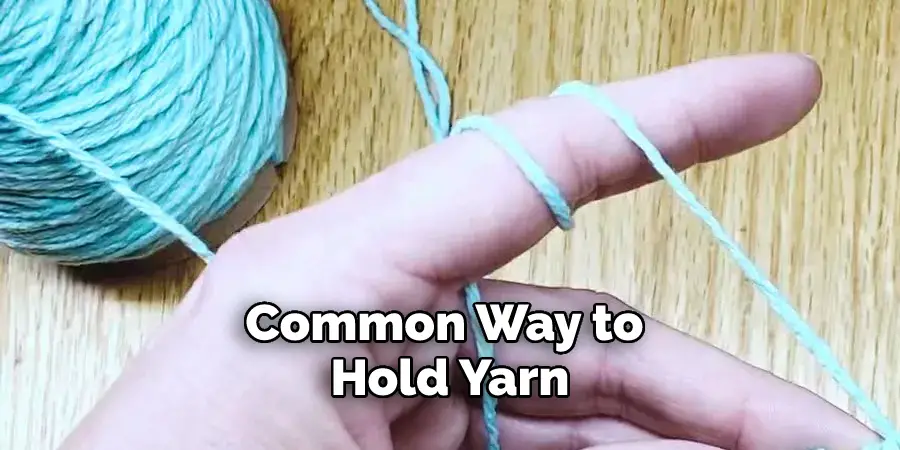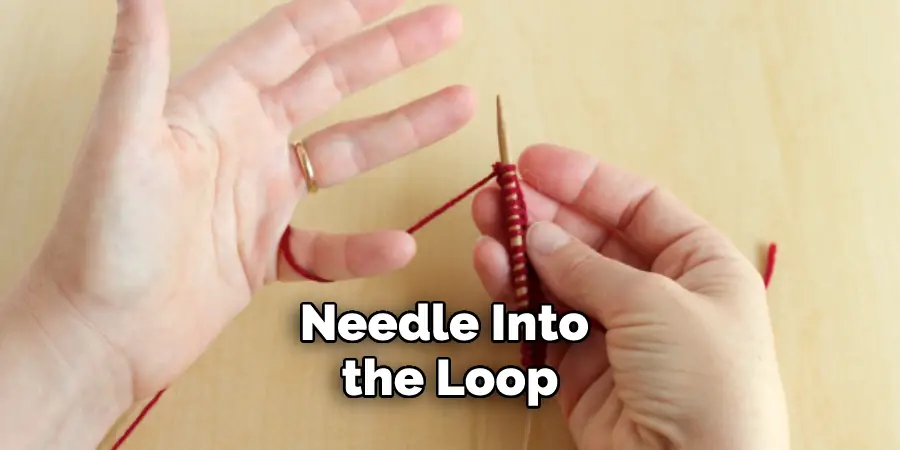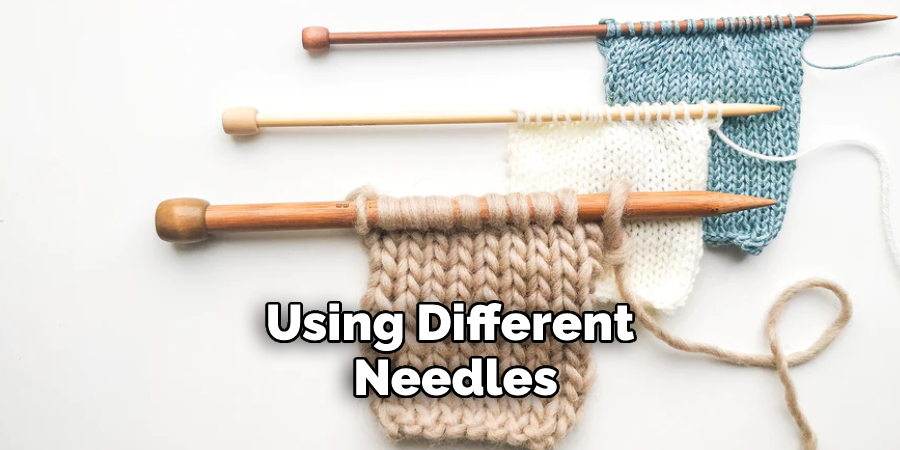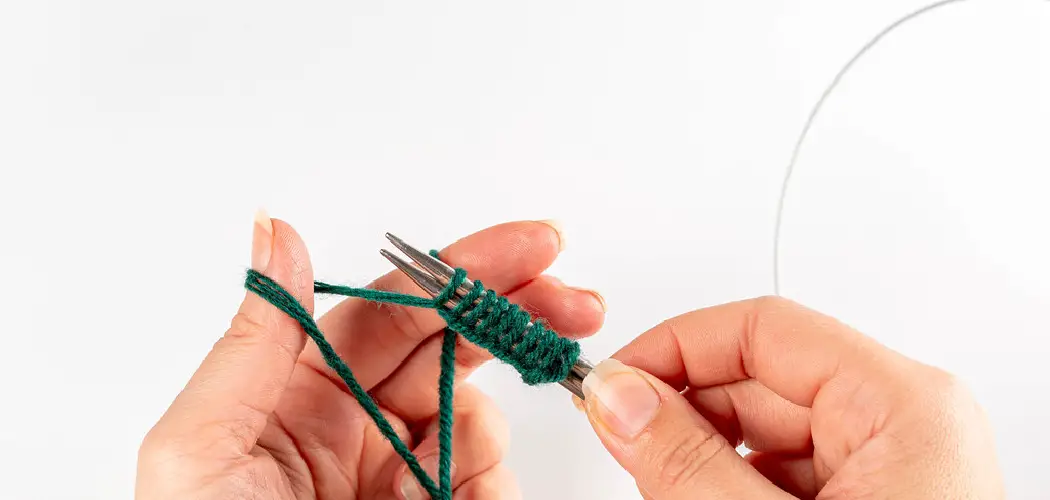Are you new to knitting? If the answer is yes, then you’ve come to the right place! Learning how to hold yarn when knitting can seem daunting at first, but with a few tips and tricks, it really isn’t as difficult as it may appear.

Whether you are holding the yarn in your left or right hand, knowing the correct techniques will help improve your accuracy and ease when creating pieces of fabric that are both durable and beautiful. In this blog post, we’ll give readers an overview of different ways to hold yarn while helping them make their own decision on which option works best for them.
What Is the Fastest Way to Hold Yarn for Knitting
For those looking to knit fast, the most popular way of holding the yarn is called the “English” or “throwing” method. To hold the yarn in this way, first, wrap the yarn around your index finger and then hold it with your thumb. The strand of yarn will stay taut as you knit each stitch.
Another popular way to hold yarn is the “Continental” or “picking” method. In contrast to the English method, in this case, you wrap the yarn around your left index finger and pinch it with that hand’s thumb and middle finger. This type of knitting requires less movement of your hands as you knit each stitch, making it a good option for experienced knitters.
It is important to note that the way you hold your yarn can also affect how tight your stitches are. If you find that your stitches are consistently too loose, try using a different method of holding the yarn. Additionally, make sure that the strand of yarn is not too tight or too loose as you knit.
Ultimately, the best way to hold yarn for knitting will come down to personal preference and experience. Experiment with different methods until you find one that works for your particular style of knitting! With enough practice, you’ll be able to develop a steady rhythm and become an expert knitter in no time.
9 Methods on How to Hold Yarn when Knitting
1. The Basic Overhand
The most common way to hold yarn is also the easiest: simply drape the yarn over your fingers, letting the working end hang down from the pinky side. You can adjust how tightly you wind the yarn around your fingers to control the tension. This method is often used by beginners as it is easy to learn and control.

2. The Continental
The continental method is similar to the basic overhand, but the yarn is wrapped around the pinky finger instead of hanging down from it. This method is often used by knitters who are faster as it requires less movement of the hands. To begin, the yarn should be wrapped around the pinky finger from back to front and secured.
The left hand will then hold the needles with the tips pointing away while the right-hand holds and controls the yarn. To knit a stitch, insert the right needle into the loop on the left needle, then wrap the yarn around the right needle and pull it through the loop on the left needle.
3. The English
The English method is also similar to the basic overhand, but the yarn is held in the palm of the hand instead of wrapped around the fingers. This method can be used to create a tighter or looser tension, depending on how you hold the yarn in your palm. To begin, the yarn should be placed in the palm of the left hand and secured with a finger.
The left hand will then hold the needles with the tips pointing away while the right-hand holds and controls the yarn. To knit a stitch, insert the right needle into the loop on the left needle, then wrap the yarn around the right needle and pull it through the loop on the left needle.

4. The Celtic Weave
The Celtic weave is a more advanced technique that creates a decorative woven effect on the fabric. To do this, you will need two strands of yarn: one held in each hand.
The strand in your left hand should be wrapped around your left little finger, while the strand in your right hand should be draped over your right index finger. Then, take the strand in your right hand and weave it over and under the strand in your left hand. Repeat this process until you reach the end of your row.
5. The Knit Stitch
The knit stitch is another advanced technique that can be used to create a decorative woven effect on the fabric. To do this, you will need two strands of yarn: one held in each hand. The strand in your left hand should be wrapped around your left little finger, while the strand in your right hand should be draped over your right index finger.
Then, take the strand in your right hand and insert it into the loop created by the strand in your left hand. Pull both strands through this loop and then allow the loop on your left needle to slide off. Repeat this process until you reach the end of your row.
6. The Purl Stitch
The purl stitch is an advanced technique that can be used to create a decorative woven effect on the fabric. To do this, you will need two strands of yarn: one held in each hand.
The strand in your left hand should be wrapped around your left little finger, while the strand in your right hand should be draped over your right index finger. Then, take the strand in y our right hand and insert it into the loop created by the strand in your left hand. Pull both strands through this loop, leaving the loops on the needles. Repeat this process until you reach the end of your row.
7. The Thumb Method
The thumb method is a great way to control tension while knitting. To do this, you will need two strands of yarn: one held in each hand. The strand in your left hand should be wrapped around your left little finger, while the strand in your right hand should be draped over your right thumb.
Take the strand in your right hand and insert it into the loop created by the strand in your left hand. Pull both strands through this loop and then allow the loop on your left needle to slide off. Repeat this process until you reach the end of your row.

8. The Combination Method
The combination method is a great way to create more decorative and intricate stitches while knitting. To do this, you will need two strands of yarn: one held in each hand.
First, take the strand in your left hand and wrap it around your little left finger. Then, take the strand in your right hand and weave it through alternating loops on the needle with each stitch. Finally, pull both strands through this loop and then allow the loop on your left needle to slide off. Repeat this process until you reach the end of your row.
9. The Portuguese Method
The Portuguese method is an advanced technique used to create a textured pattern on the fabric. To do this, you will need two strands of yarn: one held in each hand.
The strand in your left hand should be wrapped around your left little finger and draped over your wrist. Then, take the strand in your right hand and weave it between each stitch with an underhand motion. Pull both strands through this loop and then allow the loop on your left needle to slide off. Repeat this process until you reach the end of your row.
Do Tight Knitters Use More Yarn?
No, tight-knitters do not necessarily use more yarn. The amount of yarn used is determined by the type of stitch and the pattern you are knitting. If you are a tight knitter, it may take you longer to complete your project, but it will not use up significantly more yarn than if you were a loose knitter.
It is important to maintain tension while knitting, but if you are too tight, it can make your project look stiff and could also cause problems with the finished item. It is best to find a stitch that works for your particular tension and stick with it. If you do need to adjust your tension, try using different needles or a larger hook size if available.

Conclusion
So, there you have it! You now know how to hold your yarn when knitting. There are a few different ways to do it, and the best way is the one that feels most comfortable for you. Experiment with all of the different techniques and see which one works best for you.
With a little practice, you’ll be a pro in no time! We hope this guide on how to hold yarn when knitting was helpful. Please share it with your friends on social media if you find it useful. And be sure to check back here soon for more informative guides like this one.
You Can Check It Out to How to Knit a Leaf

